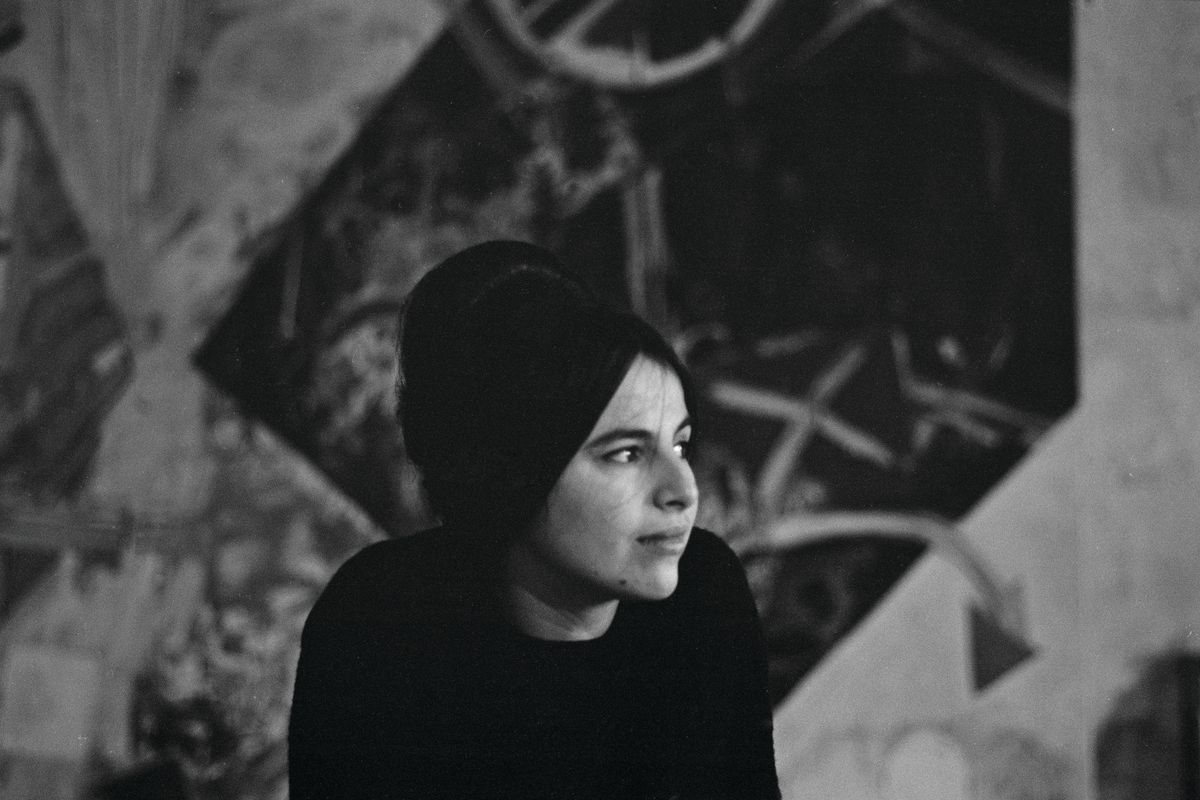“How cruel though if someone reads this book. That would be their problem.” So a young artist confided to her notebook. The artist was Eva Hesse (1936-70). By the time of her death, she was an admired sculptor and a key figure in the New York art scene; there is a strong case for suggesting that Hesse is the most influential female artist of the 20th century. Her soft organic forms, most especially the strung latex-and-wire webs, offered new possibilities in our understanding of sculptural space and process.
Hesse was born to a Jewish family in Hamburg. Her family fled Germany following Kristallnacht in 1938 and moved to New York. The diaries begin in 1955, when she was a student. Although being an artist was central to Hesse’s life, artistic ideas are not central to the diaries, which will prove their greatest strength and weakness for readers. They are a mixture of journal, notebook and sketchbook, with private thoughts juxtaposed with reading lists, addresses, to-do lists, doctor’s appointments and drawings. Although not as integrated an insight into art as Delacroix’s journal or Van Gogh’s letters, this book will have considerable interest not just for academics and artists but general readers too.
Hesse wrote sporadically, prompted by emotion rather than a record-keeper’s compulsion for regularity, so the peaks and troughs are particularly dramatic. She chronicled her troubled physical health: bouts of depression and mania led her to therapy and medication. She worried about putting on weight and looking frumpy, despite being strikingly attractive.
Her marriage to sculptor Tom Doyle proved difficult. She was dissatisfied with her output and resentful of her husband’s productive sessions in the studio. As Doyle detached himself further and began having affairs, Hesse was plunged into fits of anger and depression, reduced to tantrums to provoke a reaction from him. Like all diary-keepers, Hesse is an unreliable narrator, with her entries coloured by the day’s mood. Nevertheless, the couple’s mutual unhappiness is apparent. Her self-lacerating honesty makes painful and moving reading.
Hesse writes relatively little about her artistic intentions, although she does record a breakthrough that would herald her mature phase. On 10 December 1964, she records her decision to abandon Expressionist painting and to work in plaster, appreciating its physical characteristics and its status as a material without artistic pedigree. Using plaster and non-artistic materials (such as latex, rubber and wire) enabled her to avoid the art-historical canon of oil paintings—something she felt distant from.
Hesse immersed herself in the New York scene at a time when Minimalism was ascendant, making friends with Donald Judd, Robert Smithson and Carl Andre. Sol LeWitt became a close friend and confidant. As her career took off, the personal diary entries dwindle. Then in Christmas 1969 and early 1970 come a few personal entries, which turned out to be her last. She wrote from a hospital bed, in pain from emergency brain surgery. She was weak but lucid and wrote of her desire to make new art. She died on 29 May 1970, aged 34, of brain cancer.
The fact that most entries are undated, combined with the frequent breaks, will leave readers feeling cut adrift from external reference points. The decision not to supply illustrations, biographies and historical footnotes in this first edition indicates the publisher’s decision that immersion is more important than providing historical context.
Hesse’s diaries are likely to become required reading for female art students and an essential reference in discussions about writing by women artists. Responses to this publication are likely to be complex—and rightly so. On the one hand, these are the intimate thoughts of a young woman wrestling with the challenges of ordinary life, which present us with a fascinating and readable insight into her life. On the other hand, this is a text written by a student as she becomes a major artist. Does one aspect undermine the other? Does reading the text for human interest in the life of a female artist belittle her as a serious creative figure? These are the diaries of a woman negotiating traditional gender roles as wife, daughter and caregiver as she attempts to establish herself as a professional artist. Hesse is the most prominent female artist of her era, but she still appreciated the advice and encouragement of male colleagues. To what degree she defined herself primarily as a female artist and her art as primarily “feminine” is unclear.
Readers will find themselves empathising with Hesse, sharing her despair, pleasure and pride. Hesse’s diaries are a fascinating and compellingly human document.
• Alexander Adams is an artist and poet based in Bristol. His latest book, On Dead Mountain, is published by Golconda
Diaries: 1955-70
Eva Hesse; edited by Barry Rosen with assistance from Tamara Bloomberg
Yale University Press in association with Hauser & Wirth, 976pp, £30, $45 (pb)


